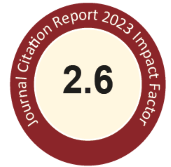Abstract
This study examined the hydrolysis of chicken blood meal on soluble protein content, peptide content, the degree of hydrolysis and the inhibition of the Angiotensin I - Converting Enzyme (ACE). The results showed that soluble protein, peptide content and the degree of hydrolysis of the hydrolysates increased when either hydrolysis time or enzyme concentration increased. Five-hour long hydrolysis, using 10% Alcalase enzyme produced the highest ACE-inhibition activities. Under these conditions, the Alcalase IC50 value at 0.34 mg peptide/mL was significantly lower than that obtained from other combinations of enzyme, concentration and hydrolysis time. Separation of the hydrolysates by ultrafiltration isolated a fraction (F3) of less than 3000 Da molar mass. The F3 fraction performed with an IC50 value of only 0.06 mg peptide/mL. Further separation by FPLC using a Superdex peptide 10/300 GL gel column produced the highest inhibitory efficiency ratio (1071%/mg/mL). These results suggest that chicken blood hydrolysates can potentially be developed as functional food products in the future.
Recommended Citation
Huang, S.-C. and Liu, P.-J.
(2010)
"Inhibition of angiotensin I - Converting enzymes by enzymatic hydrolysates from chicken blood,"
Journal of Food and Drug Analysis: Vol. 18
:
Iss.
6
, Article 5.
Available at: https://doi.org/10.38212/2224-6614.2239

